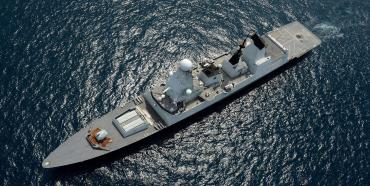January 5, 2018
The Case
Yemen began producing oil and gas in 1986 and exporting liquefied natural gas in November 2009. In 2011, production of natural gas reached 340 billion cubic feet and 164.48 thousand barrels per day of petroleum. With a capital expenditure of $4.5 billion, the Yemen LNG project is the largest industrial project in the country. French company Total holds a 39.6 % stake in the project, with the other participants being Hunt at 17.22%, Yemen Gas Company at 16.73%, SK Corporation at 9.55%, Korea Gas Corporation at 6%, Hyundai Corporation at 5.88% and GASSP at 5%.
The liquefaction plant operated by Total at the port of Balhaf on the Gulf of Aden is comprised of two liquefaction trains and has a total capacity of 6.7 million metric tons per year. GE’s Power Conversion business was awarded a contract to supply two sets of complete electrical systems to drive four compressors for the liquefaction trains.
Our solution
GE provided two complete electrical systems, with each including :
• Network transformer 33 kV / 4x1850 V
• Frequency converter MV7612 and accessories housed in ATEX containers
• Two 2-pole induction motors: 3,600 rpm – 11 MW each
• Cooling systems
• Automation system for operator monitor and control interface
The challenge
From the 33 kV network to the 11 MW induction motors shaft end, GE carried out all the studies, supply and integration of the different types of electrical equipment , and was able to reduce the number of items of equipment . For each train, a converter drives two 11 MW induction motors that are directly coupled to the compressor.
The 2-pole turbo induction machines are used as a :
• Starter, which accelerates the shaft until combustion starts the gas turbine
• Helper, to provide additional power to the gas turbine when required (future operation)
Induction motors to replace synchronous motors
Since the early 1980s frequency converter technology has evolved so that it now applies to electrical motors and acts as direct drives of pumps and compressors. The latest progress in IGBT technology and advanced motor control allows induction motors to provide higher power in medium- voltage, whereas traditionally, synchronous motors are used for driving compressors. The squirrel cage induction motor rotor is a far simpler construction and is inherently more robust than synchronous motors. The rotor conductors are not insulated, and the rotor does not require any rotor excitation circuit.
Benefits of VSI technology
Voltage Source Inverter (VSI) technology improves the quality and efficiency of the production and offers lower network interferences (low harmonics and high power factor).
MV7000 medium-voltage drive technology also offers the benefits of :
• Energy enhancement: The PWM active front end enables regeneration of the energy to the network
• High efficiency: Up to 99 percent performance
• Reliability: With press-pack IGBT technology, fuseless protection and low component count , the MV7000 has a longer life expectancy even under load cycling
• Power density: Up to 1.1 MVA/m3 for the complete drive
• Redundancy: Secured continuous conduction of the PPI in failure mode
• Safety: Case rupture-free and arc ignition-free due to pressed contacts and no wire bonding
Additional advantages of this solution, which is based on an induction motor with IGBT inverter, are its reliability and robustness in induction motors, lower maintenance requirements, and compact size.



